👨🎓个人主页:研学社的博客
💥💥💞💞欢迎来到本博客❤️❤️💥💥
🏆博主优势:🌞🌞🌞博客内容尽量做到思维缜密,逻辑清晰,为了方便读者。
⛳️座右铭:行百里者,半于九十。
📋📋📋本文目录如下:🎁🎁🎁
目录
💥1 概述
本文优化的启发式集成低能耗自适应集群层次结构协议(OHILEACH)是从ILEACH协议升级而来的,其中资源(电池)利用率得到进一步优化。
📚2 运行结果
2.1 算例1
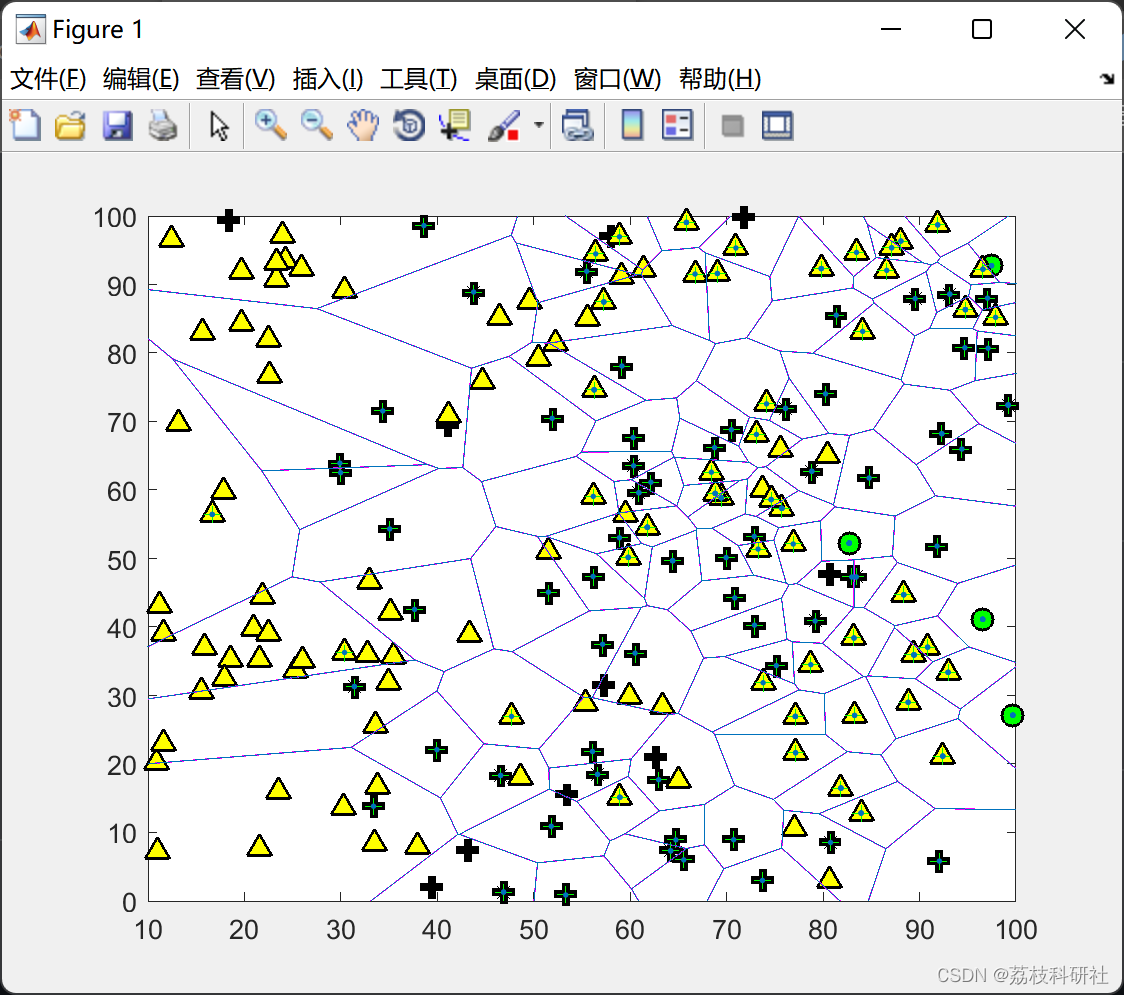
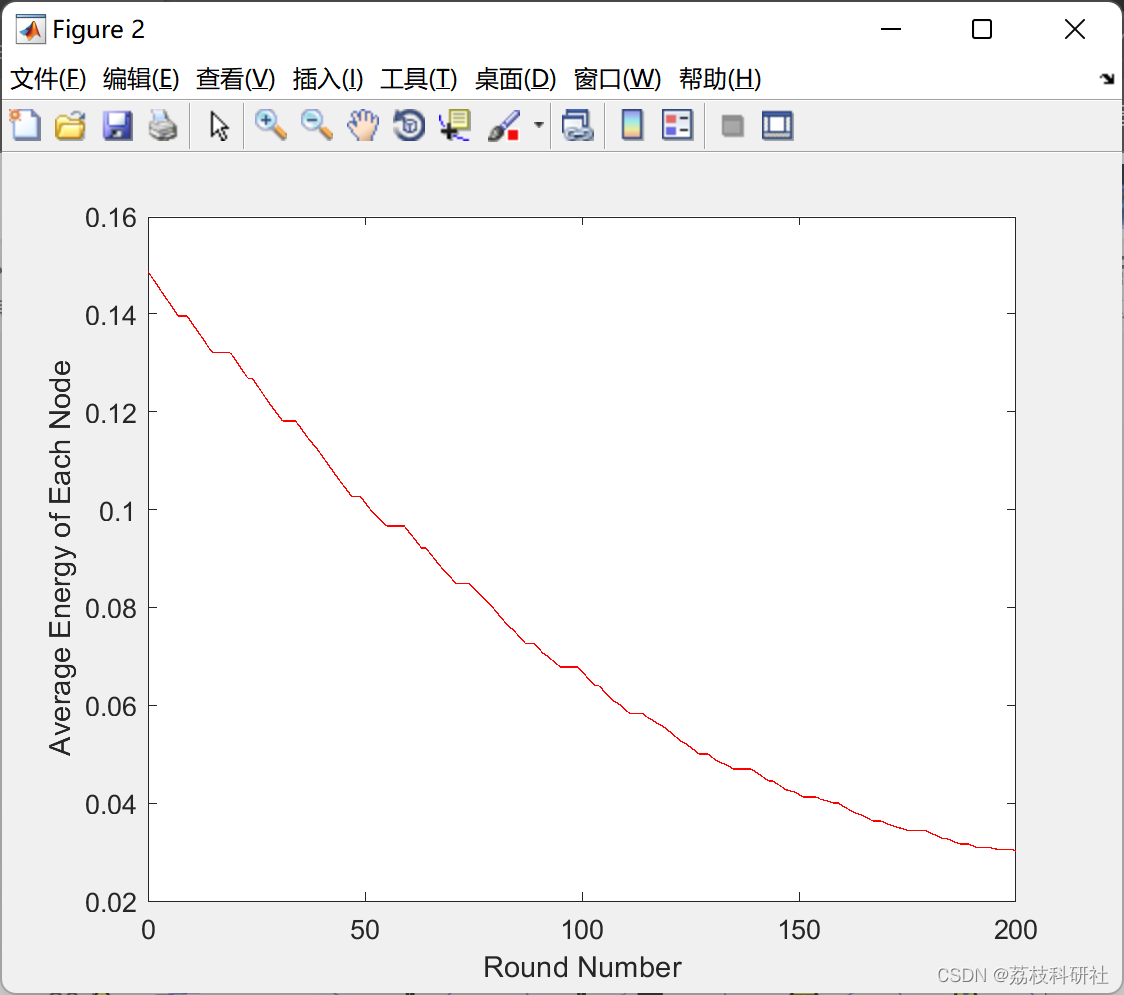
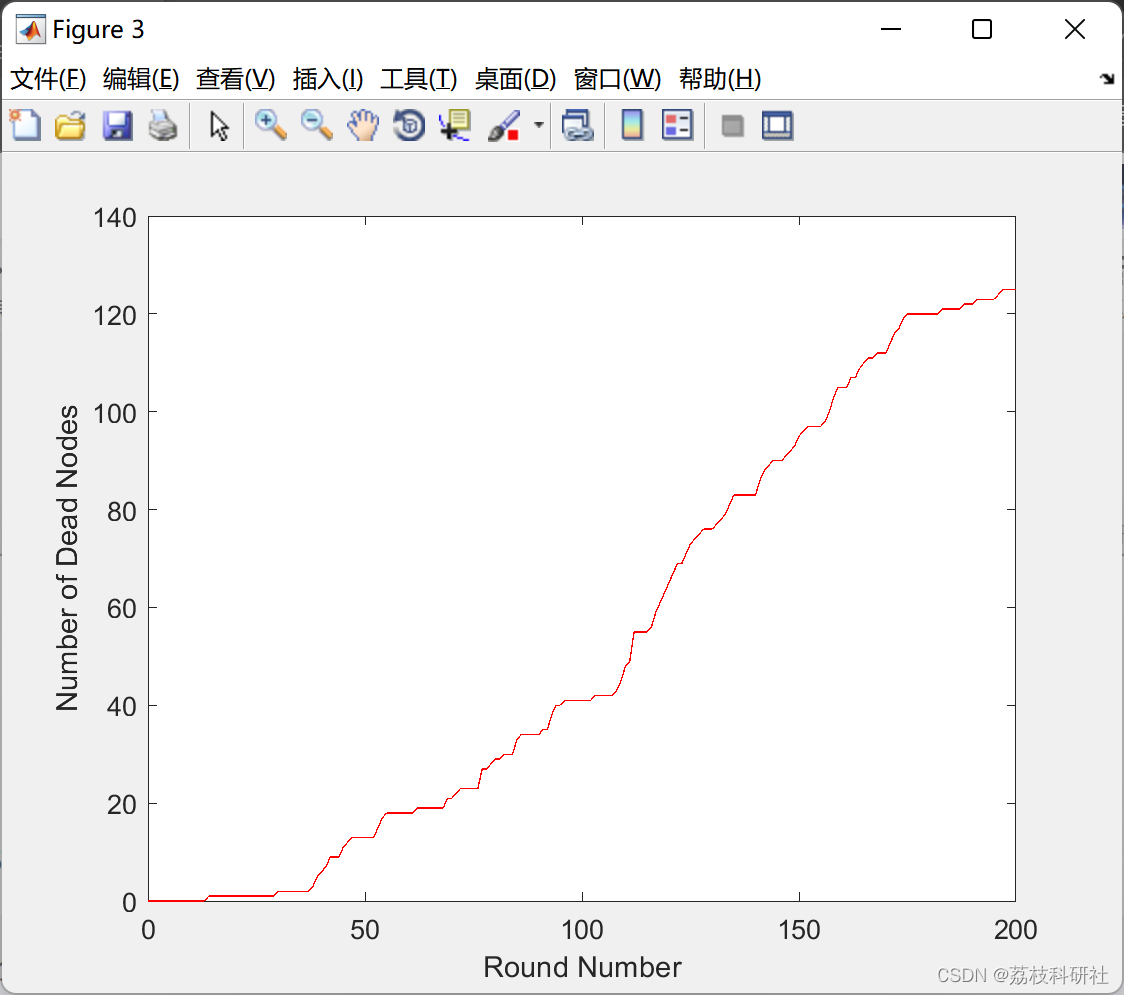
2.2 算例2
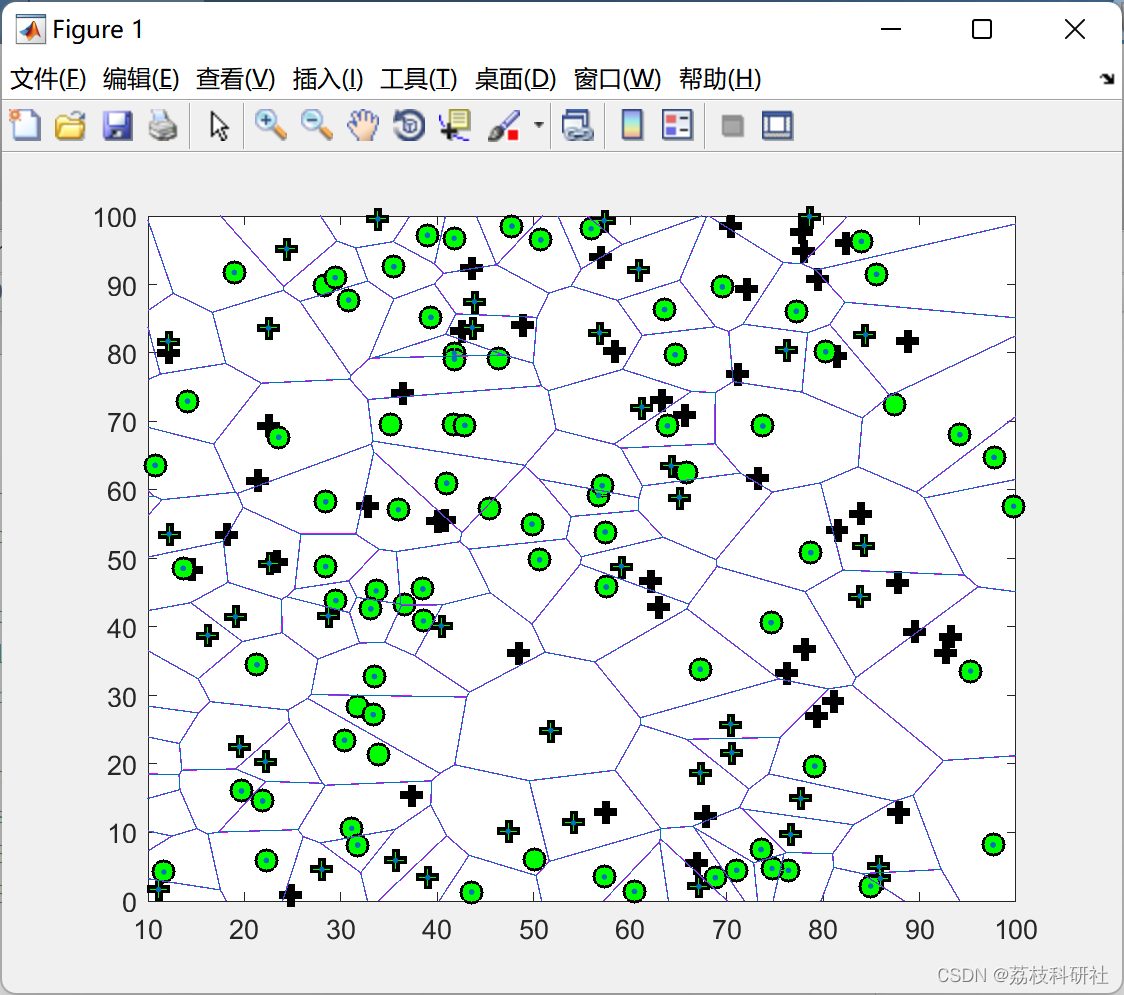
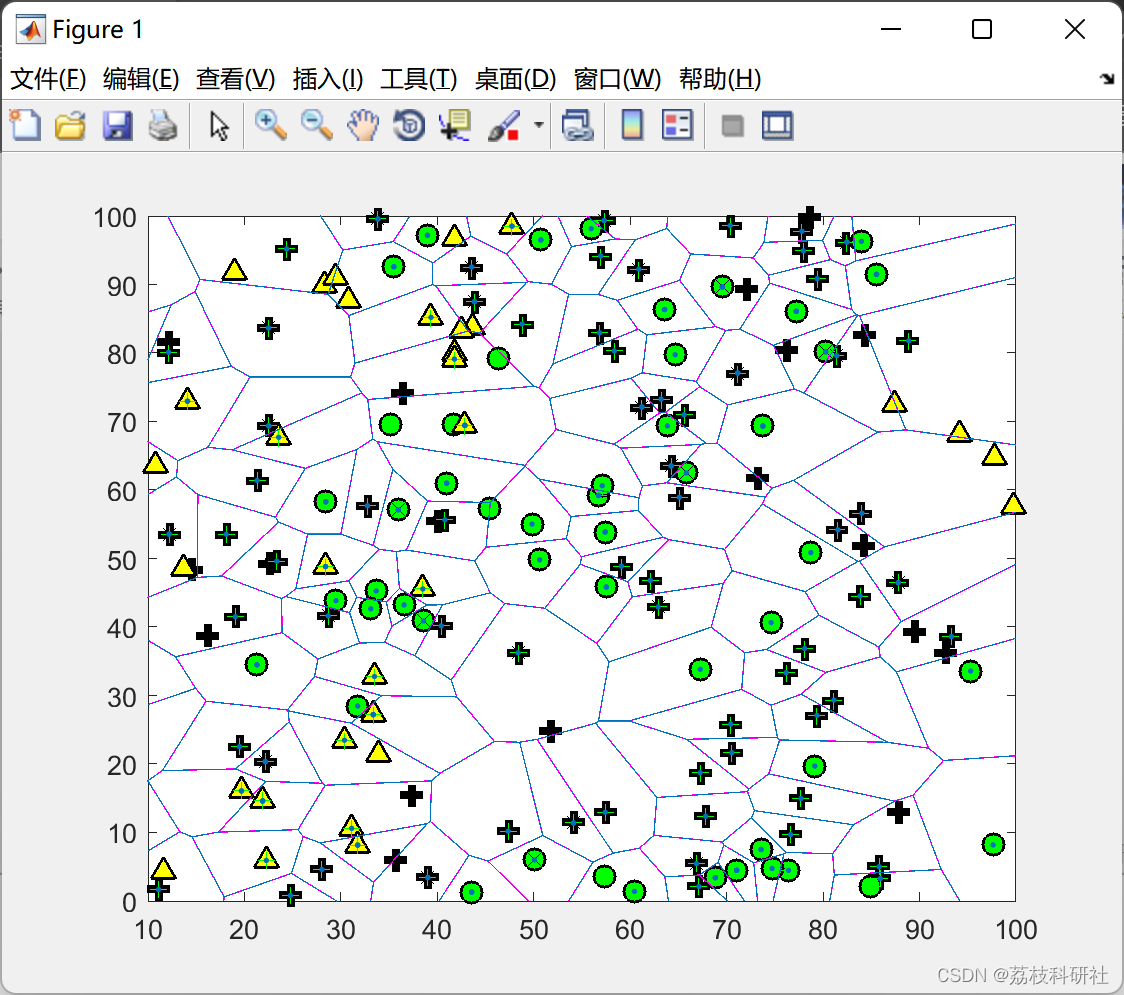
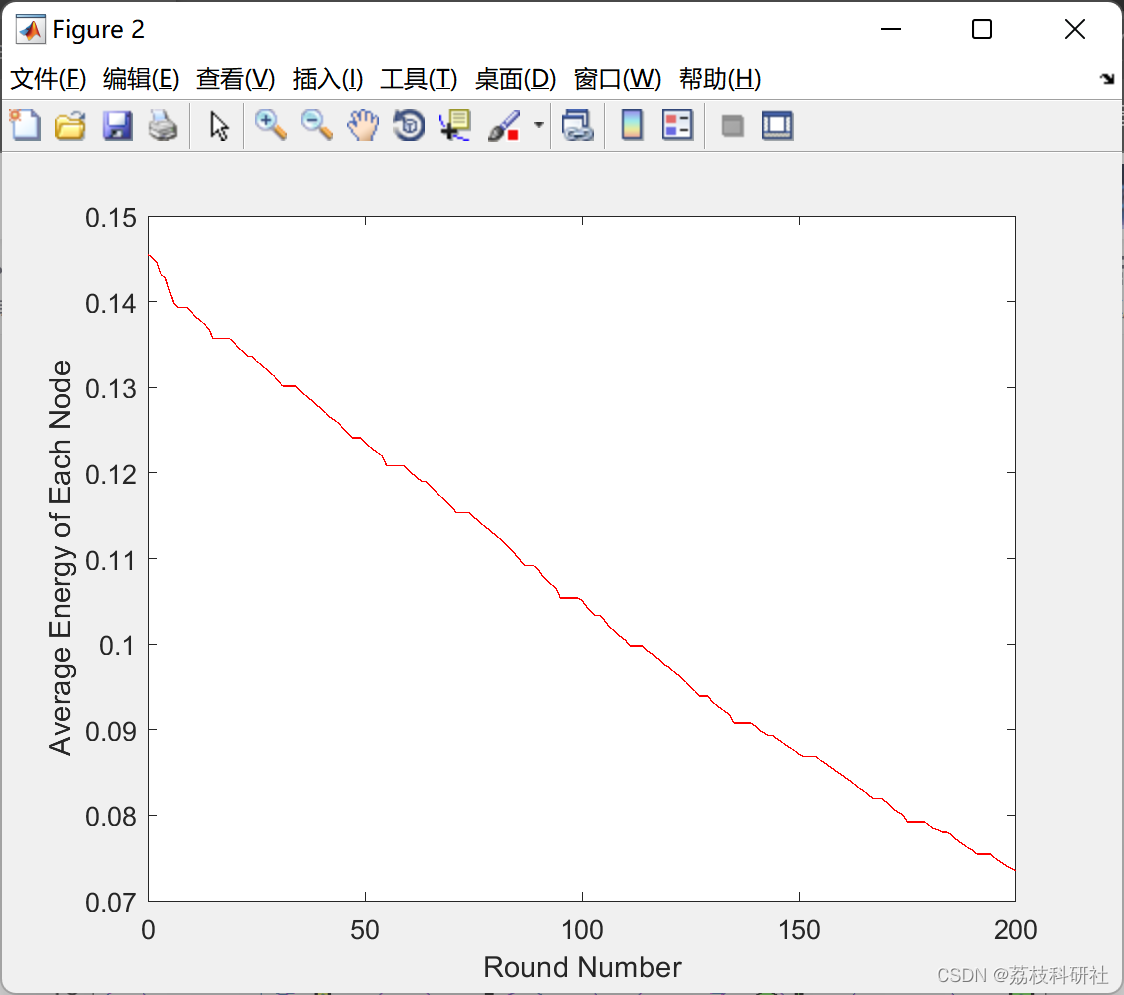
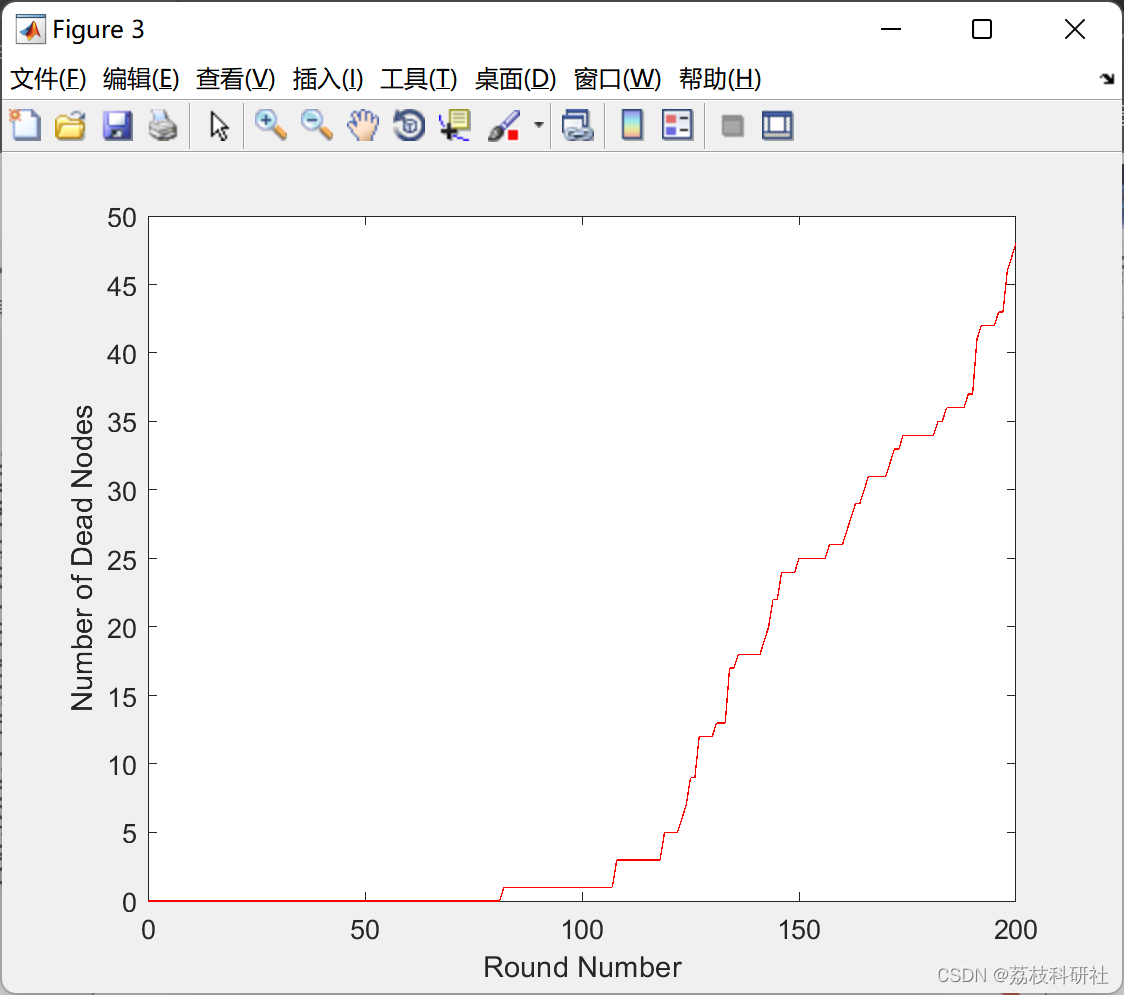
2.3 算例3
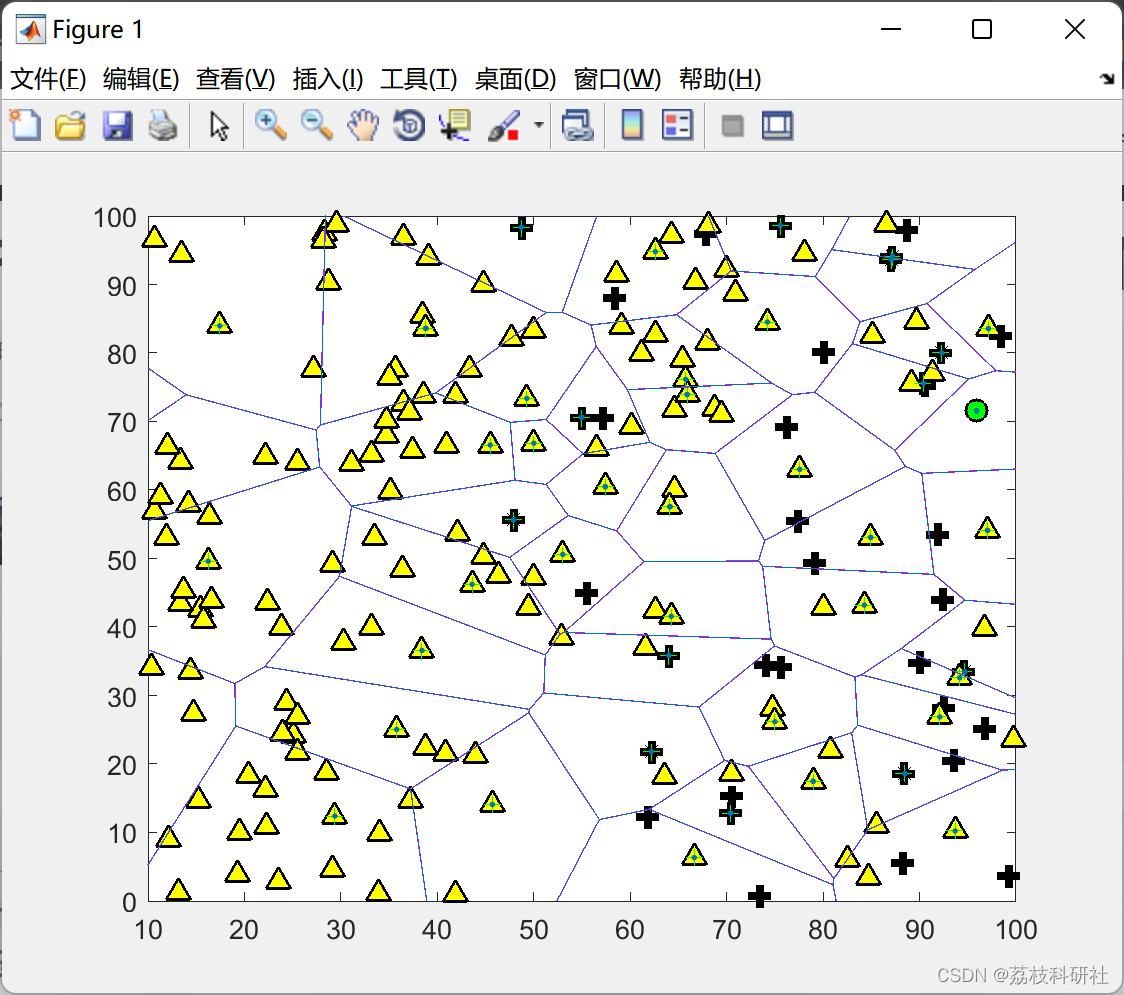
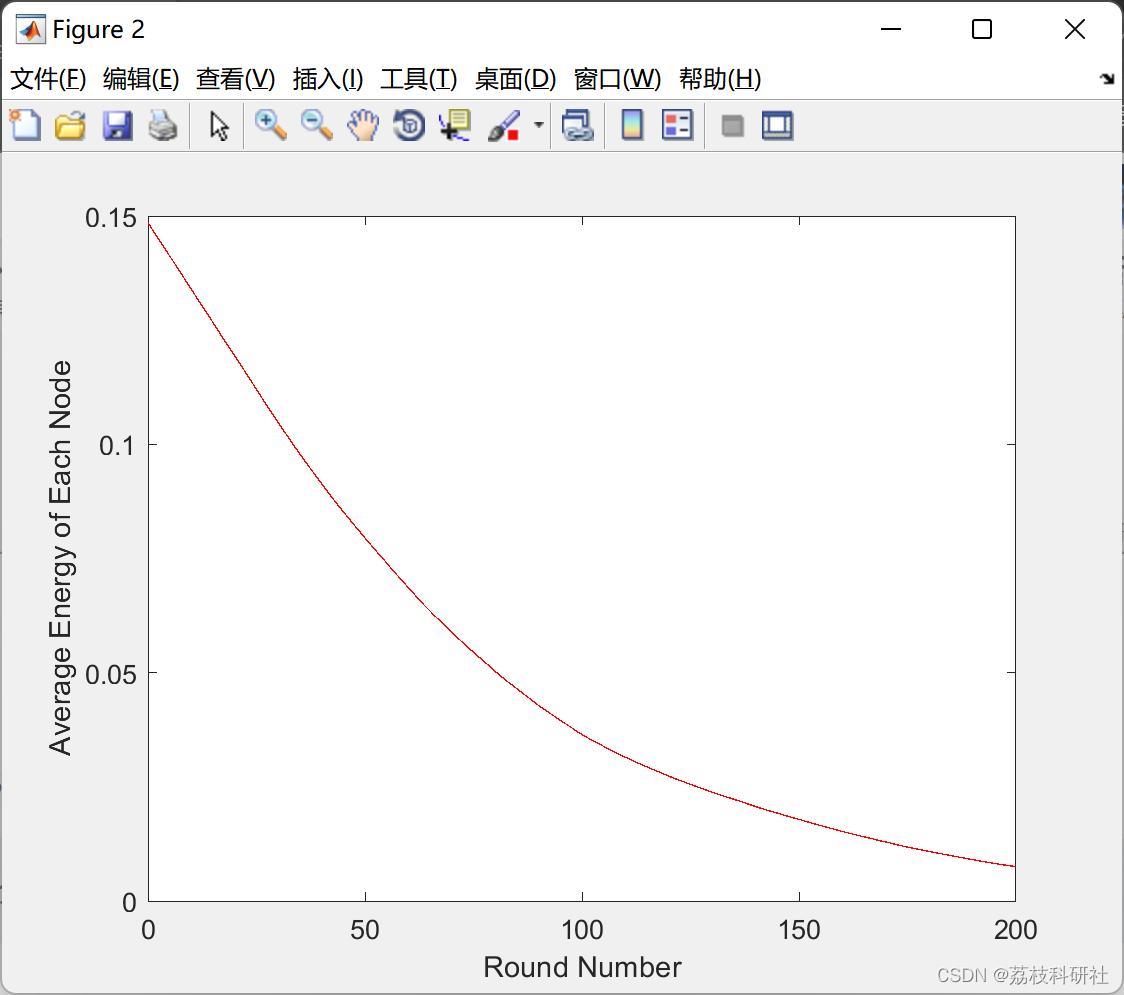
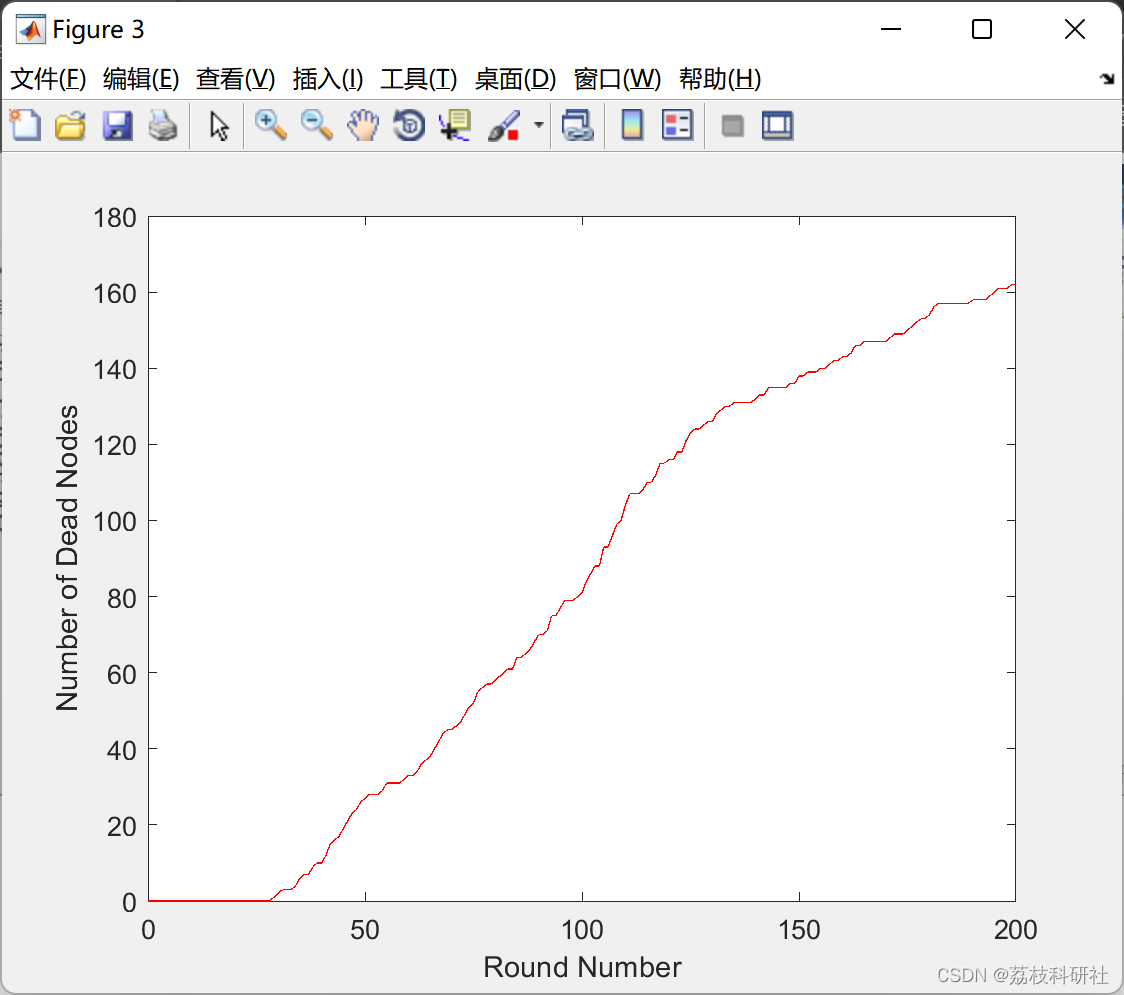
部分代码:
%x and y/ Coordinates of the Sink
sink.x=1.5*xm;
sink.y=0.5*ym;
%Optimal Election Probability of a node
%to become cluster head
p=0.2;
%Eelec=Etx=Erx
ETX=50*0.000000001;
ERX=50*0.000000001;
%Transmit Amplifier types
Efs=10*0.000000000001;
Emp=0.0013*0.000000000001;
%Data Aggregation Energy
EDA=5*0.000000001;
%Values for Hetereogeneity
%Percentage of nodes than are advanced
m=0.5;
%\alpha
a=1;
%maximum number of rounds
%rmax=input('enter the number of iterations you want to run : ');
rmax=200;
%------------------
%Computation of do
do=sqrt(Efs/Emp);
%Creation of the random Sensor Network
figure(1);
hold off;
for i=1:1:n
S(i).xd=rand(1,1)*xm;
XR(i)=S(i).xd;
S(i).yd=rand(1,1)*ym;
YR(i)=S(i).yd;
S(i).G=0;
%initially there are no cluster heads only nodes
S(i).type='N';
temp_rnd0=i;
%Random Election of Normal Nodes
if (temp_rnd0 >= m*n+1)
S(i).E=Eo;
S(i).ENERGY=0;
plot(S(i).xd,S(i).yd,'o-r');
hold on;
end
%Random Election of Advanced Nodes
if (temp_rnd0 < m*n+1)
S(i).E=Eo*(1+a);
S(i).ENERGY=1;
plot(S(i).xd,S(i).yd,'+');
hold on;
end
end
S(n+1).xd=sink.x;
S(n+1).yd=sink.y;
plot(S(n+1).xd,S(n+1).yd,'o', 'MarkerSize', 12, 'MarkerFaceColor', 'r');
figure(1);
% figure(1)
% plot(o1,o2,'^','LineWidth',1, 'MarkerEdgeColor','k', 'MarkerFaceColor','y', 'MarkerSize',12);
% hold on
%First Iteration
%counter for CHs
countCHs=0;
%counter for CHs per round
rcountCHs=0;
cluster=1;
countCHs;
rcountCHs=rcountCHs+countCHs;
flag_first_dead=0;
for r=0:1:rmax
r;
%Operation for epoch
if(mod(r, round(1/p) )==0)
for i=1:1:n
S(i).G=0;
S(i).cl=0;
end
end
hold off;
%Number of dead nodes
dead=0;
%Number of dead Advanced Nodes
dead_a=0;
%Number of dead Normal Nodes
dead_n=0;
%counter for bit transmitted to Bases Station and to Cluster Heads
packets_TO_BS=0;
packets_TO_CH=0;
%counter for bit transmitted to Bases Station and to Cluster Heads
%per round
PACKETS_TO_CH(r+1)=0;
PACKETS_TO_BS(r+1)=0;
figure(1);
for i=1:1:n
%checking if there is a dead node
if (S(i).E<=0)
plot(S(i).xd,S(i).yd,'^','LineWidth',1, 'MarkerEdgeColor','k', 'MarkerFaceColor','y', 'MarkerSize',8);
dead=dead+1;
if(S(i).ENERGY==1)
dead_a=dead_a+1;
end
if(S(i).ENERGY==0)
dead_n=dead_n+1;
end
hold on;
end
if S(i).E>0
S(i).type='N';
if (S(i).ENERGY==0)
plot(S(i).xd,S(i).yd,'o','LineWidth',1, 'MarkerEdgeColor','k', 'MarkerFaceColor','g', 'MarkerSize',8);
end
if (S(i).ENERGY==1)
plot(S(i).xd,S(i).yd,'+','LineWidth',3, 'MarkerEdgeColor','k', 'MarkerFaceColor','r', 'MarkerSize',8);
end
hold on;
end
end
plot(S(n+1).xd,S(n+1).yd,'x','LineWidth',1, 'MarkerEdgeColor','k', 'MarkerFaceColor','r', 'MarkerSize',8);
STATISTICS(r+1).DEAD=dead;
DEAD(r+1)=dead;
DEAD_N(r+1)=dead_n;
DEAD_A(r+1)=dead_a;
% plot(S(n+1).xd,S(n+1).yd,'o', 'MarkerSize', 12, 'MarkerFaceColor', 'r');
% plot(S(n+1).xd,S(n+1).yd,'x','LineWidth',1, 'MarkerEdgeColor','k', 'MarkerFaceColor','r', 'MarkerSize',8);
%When the first node dies
if (dead==1)
if(flag_first_dead==0)
first_dead=r;
flag_first_dead=1;
end
end
countCHs=0;
cluster=1;
for i=1:1:n
if(S(i).E>0)
temp_rand=rand;
if ( (S(i).G)<=0)
%Election of Cluster Heads
if(temp_rand<= (p/(1-p*mod(r,round(1/p)))))
countCHs=countCHs+1;
packets_TO_BS=packets_TO_BS+1;
PACKETS_TO_BS(r+1)=packets_TO_BS;
S(i).type='C';
S(i).G=round(1/p)-1;
🎉3 参考文献
部分理论来源于网络,如有侵权请联系删除。























 2189
2189











 被折叠的 条评论
为什么被折叠?
被折叠的 条评论
为什么被折叠?










